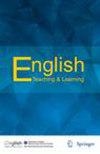CLIL Students’ Academic Language Performance on a Non-curricular Topic: a Comparison Between High-Exposure and Low-Exposure Groups
IF 1.1
Q2 EDUCATION & EDUCATIONAL RESEARCH
引用次数: 0
Abstract
Abstract In Content and Language Integrated Learning (CLIL) contexts, when students are prompted to express content in a second language, they are expected to draw on their knowledge of the topic at hand and use linguistic resources they have learnt implicitly or explicitly in the content and/or language class. In some CLIL programs, while some students study academic subjects like history in the L2, other students study fewer and more practical subjects such as art. This is the case with high-exposure (HE) and low-exposure (LE) groups, respectively, in the Madrid bilingual secondary school programs. Thus, HE students are expected to perform better in the expression of academic content in the L2, but it is not clear if this is also the case when prompted to write about a topic that is not part of their curriculum. In this study, we compare the texts written by groups of CLIL students with different degrees of exposure to English (HE and LE) in response to a prompt on the Women’s Movement (Feminism) eliciting Cognitive Discourse Functions, such as defining or evaluating, among others. The aim of the study was to compare how HE and LE students make specialist-knowledge claims and use their voices in this topic, which they have not been instructed in, across different CDFs. Results show differences both across groups (HE and LE) and across CDFs, showing an advantage for knowledge transfer in the HE group.CLIL学生在非课程话题上的学术语言表现:高接触组与低接触组的比较
摘要在内容与语言整合学习(CLIL)中,当学生被提示用第二语言表达内容时,他们被期望利用他们手头的主题知识,并使用他们在内容和/或语言课上隐性或显性学到的语言资源。在一些CLIL项目中,一些学生在第二语言中学习历史等学术科目,而另一些学生则学习更少、更实用的科目,如艺术。马德里双语中学项目中的高接触组(HE)和低接触组(LE)就是这种情况。因此,高等教育学生被期望在第二语言的学术内容表达方面表现得更好,但当被提示写一个非课程的主题时,情况是否也是如此尚不清楚。在本研究中,我们比较了不同程度英语水平的CLIL学生小组(HE和LE)对妇女运动(女权主义)引出认知话语功能(如定义或评价等)的提示所写的文本。这项研究的目的是比较高等教育和高等教育学生如何在不同的CDFs中提出专业知识主张,并在他们没有接受过指导的情况下,在这个主题中使用他们的声音。结果显示了不同组(高水平和低水平)和不同CDFs之间的差异,表明高水平组在知识转移方面具有优势。
本文章由计算机程序翻译,如有差异,请以英文原文为准。
求助全文
约1分钟内获得全文
求助全文
来源期刊

English Teaching and Learning
Multiple-
CiteScore
2.80
自引率
0.00%
发文量
26
期刊介绍:
English Teaching & Learning (ETL) is the first scholarly journal in Taiwan dedicated solely to research on the teaching and learning of English as a second or foreign language. It aims to publish quality papers that contribute to all aspects of the profession, with a particular preference for studies that seek to combine both theory and practice. The journal welcomes submissions on course design, teaching materials, teacher training, teaching methods, language assessment, bilingual education, as well as from the fields of sociolinguistics, psycholinguistics, and other related areas.
 求助内容:
求助内容: 应助结果提醒方式:
应助结果提醒方式:


